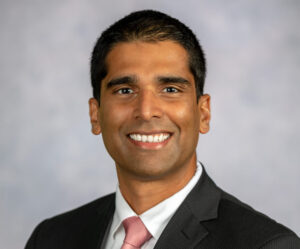Writer: Max Crampton-Thomas
 2 min read April 2021 — Radiology Associates of Florida (RAF) is a premier diagnostic and interventional radiology practice in the state of Florida. President Krishna Nallamshetty spoke with Invest: about RAF’s presence in Tampa Bay and the challenges that have emerged as a result of the pandemic.
2 min read April 2021 — Radiology Associates of Florida (RAF) is a premier diagnostic and interventional radiology practice in the state of Florida. President Krishna Nallamshetty spoke with Invest: about RAF’s presence in Tampa Bay and the challenges that have emerged as a result of the pandemic.
What is the importance of RAF to the Tampa Bay area and Florida in general?
RAF is the largest radiology practice in the state of Florida with over 120 physicians and close to 500 teammates. Our practice was established in the 1970’s in Tampa, FL. We provide the full gamut of diagnostic imaging and treatment. We pride ourselves on ensuring that our community has full access to all their medical imaging needs both at the hospitals we serve and at our outpatient imaging centers, Tower Radiology. We also provide radiology services for eight health systems throughout the state of Florida, all the way from the Panhandle and as far south as Venice. Regardless of the complexity of a patient’s needs, we are confident that we have the expertise to care for them with the highest level of quality and value.
How has demand for your various services shifted over the course of the pandemic?
One of the surprising things I noticed during the pandemic was seeing my physicians and teammates step up and take ownership in dealing with new challenges. We made daily operational changes to ensure we could provide the services patients needed. Very early on, we worked closely with the state government and we followed real-time CDC guidelines to adjust the services we provide. For the people who needed critical care, we became laser focused on protecting our patients to make sure they were comfortable at our offices. We were transparent with our sanitation process during their office visits. Today, our volumes are above where we were pre-COVID, so I think these processes have created a stronger infrastructure. We track all our internal infection rates and we’ve seen no change internally, which means our processes are working.
What are the main challenges you are seeing as the region emerges from the pandemic?
The main challenge we face is the psychology of going from this extreme to returning to a new normalcy. Many people are comfortable going back to normal but that does not mean everyone is. This last year has really opened our eyes to doing things differently than we’ve done for years. I don’t think we will return to exactly the way we worked pre-COVID-19. Rather, we will continue to embrace and incorporate the technology we gained into a new normal workflow. Technology in healthcare has always lagged compared to other industries. Being forced to use telemedicine made people realize its benefits and potential. That only makes access to healthcare greater and improves the patient experience.
What are the most significant transformations within the practice area?
One pillar within our practice is our culture of innovation. In radiology specifically, more than other medical specialties, the use of artificial intelligence is expanding very quickly. AI will be a huge disruptor in radiology. One way it can be used is in image detection, which is when a computer based AI algorithm helps make a diagnosis. It is like an extra set of eyes looking at a patient’s images to catch things that may be missed by a doctor. This is particularly helpful in trying to prioritize patients with critical findings because it quickly alerts the doctors where to look. These algorithms are starting to get FDA-approved and are now being rolled out clinically.
We are also going to see an expansion in medical imaging in terms of care coordination. When we perform any sort of radiology study such as MRI or CT scan, it’s common for us to recommend a follow-up study to look for improvement or disease progression. In general, the onus then falls on the patient to ensure they get the follow-up they need but data shows that only 20-30% of patients actually get care. RAF is developing a care coordination platform, which will allow us to engage more directly with the patient and their physician. If a follow-up is needed, we can use new technology to help coordinate the care the patient needs in a concierge type manner.
What are some of the unique characteristics of Tampa Bay that allows it to attract medical professionals?
We are extremely fortunate to live in Tampa Bay. It is easy to recruit medical talent to our region but we continue to need more great health care workers. Florida is growing and Tampa Bay especially is seeing a huge influx of people from all over the country because they see it as a booming city. The diversity in the different industries is contributing to the excitement about this region. RAF’s organic growth is 8-10% per year in the Tampa Bay region, meaning we need to recruit just to keep up with population growth. Healthcare in the Tampa Bay market is top notch. We have strong leaders in the region and in the last decade there has been a change from competition to collaboration. This has really promoted advancements in the industry and I am proud to practice as a physician in Tampa Bay.
